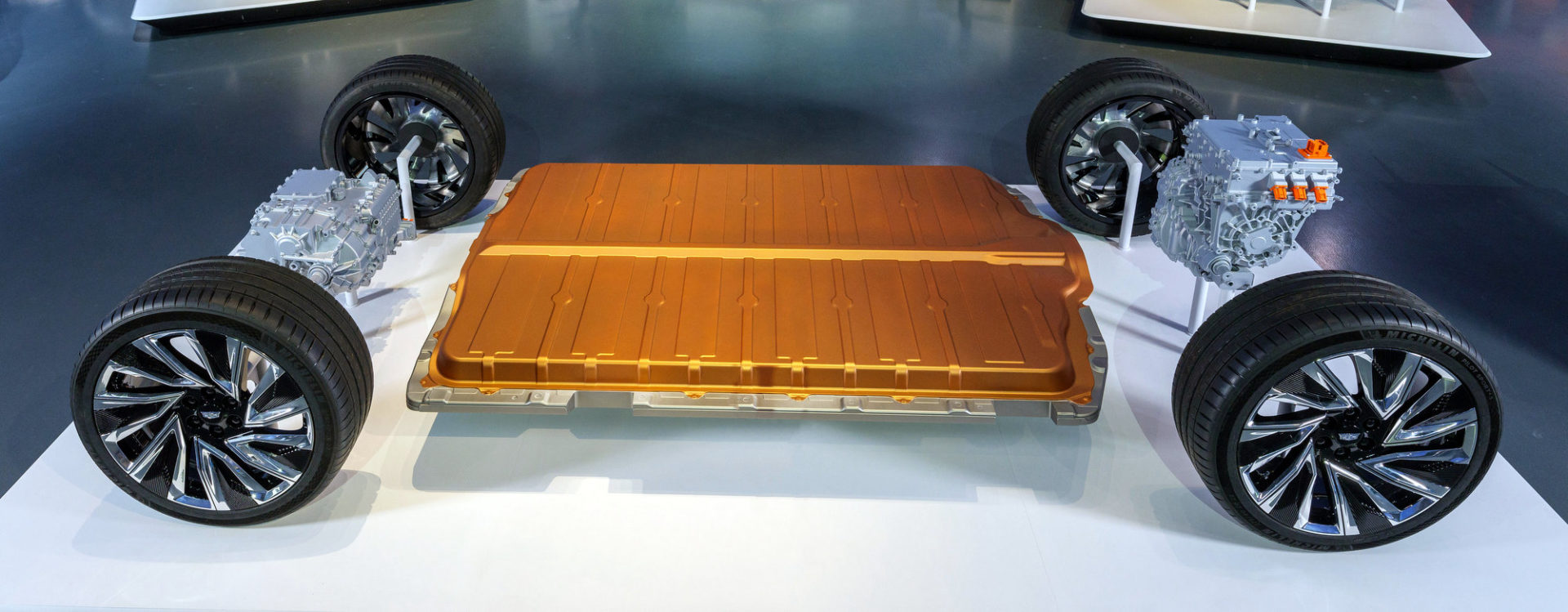Can We Extend the Life of EV Batteries and Reduce Fire Risks?
New Technology; New Advances
EVs reduce carbon emissions and dependence on fossil fuels, but the lithium-ion batteries that power them suffer from an image problem. Although they’re less likely to catch fire than internal combustion engine vehicles, Li-ion battery fires burn hotter, faster and longer than gasoline fires. They can even reignite days after the flames are extinguished. How can we make them safer without compromising battery life?

Trail Blazers—Safety Features in Li-Ion Batteries
To reduce fire risks, many EV manufacturers use the following features in their batteries:
- Explosion-proof stainless steel: A rigid metal case surrounds the battery cell.
- Safety vents: If the battery is exposed to high heat—which means the pressure will increase proportionally, as expressed by Gay-Lussac’s law—the safety vent on the battery will open and release excess energy.
- Flame retardant: The battery’s electrolyte fluid contains a flame retardant solution to minimize the risk of it catching fire.
- Thermal fuse: If the battery cell overheats, a built-in safety fuse between the cathode and anode breaks to prevent combustion.
However, the challenge is to find a balance between increased safety features and improved battery life, which often have an inverse relationship.
Solutions That Address Battery Life and Safety
Traditional EV batteries contain lithium metal anodes and a liquid electrolyte solution. Because lithium is highly reactive, it can pose a fire risk if it comes in contact with the liquid.

Chinese scientists recently discovered they could use a thick, gel-like substance in place of electrolyte fluid. Known as a gel polymer electrolyte, the material contains silica, nanoparticles and liquid electrolytes. It extends the battery’s life span and makes it less prone to combustion. This new technology could potentially power everything from EV batteries to drones, making them safer and more efficient.
Although no one has manufactured an EV battery using the gel yet, it’s a promising solution to extend an EV’s battery life and safety profile. Other ideas in development include sodium-ion batteries, batteries with solid-state electrolytes, seawater batteries and nickel-cobalt-manganese-aluminum batteries, which produce more stable cells. Researchers are also looking into different coatings for the internal components of EV batteries to reduce cracking and improve thermal stability.
The Rise of New Battery Technologies
Right now, lithium-ion batteries are the standard for electric vehicles. But innovative batteries that use different metals, coatings or electrolyte formulas could improve safety and battery life. They could also make batteries easier to recycle and more environmentally friendly to produce. It’s an exciting time in the field of vehicle manufacturing, and the EV batteries of the future will likely make today’s technology look primitive.

generic lasuna – diarex brand buy generic himcolin
besivance cost – sildamax where to buy sildamax usa
gabapentin 800mg over the counter – buy motrin generic azulfidine 500mg canada
benemid 500mg uk – order etodolac for sale purchase carbamazepine for sale
buy generic colospa – pletal over the counter pletal 100mg cheap
buy generic celecoxib – buy indomethacin 75mg pill indomethacin 75mg oral
purchase cambia generic – aspirin 75mg usa aspirin canada
buy generic rumalaya – cheap shallaki for sale elavil 50mg over the counter
order generic pyridostigmine – mestinon 60mg uk azathioprine us
cost diclofenac – buy nimotop pills for sale cheap nimotop pills
oral ozobax – ozobax buy online order piroxicam online cheap
generic meloxicam – mobic brand purchase toradol sale
oral periactin 4mg – generic zanaflex tizanidine pill
cefdinir pills – buy clindamycin medication
isotretinoin over the counter – deltasone 40mg ca order deltasone 20mg pill
order prednisone 10mg pill – cost prednisolone buy elimite online cheap
acticin order online – buy benzoyl peroxide without prescription buy tretinoin gel generic
betamethasone 20 gm brand – purchase betamethasone cream order generic benoquin
flagyl 400mg canada – flagyl cheap buy cenforce generic
cost augmentin 1000mg – augmentin 375mg ca how to get levothyroxine without a prescription
buy cheap generic cleocin – indocin tablet buy indocin without prescription
buy losartan generic – generic keflex brand cephalexin 125mg
buy crotamiton cream for sale – crotamiton usa order aczone online cheap
zyban ca – buy ayurslim purchase shuddha guggulu sale
cost progesterone 200mg – clomiphene sale cheap fertomid sale
capecitabine 500mg over the counter – mefenamic acid cheap capsules danocrine 100 mg
alendronate where to buy – order generic provera 5mg order medroxyprogesterone 10mg
гѓ—гѓ¬гѓ‰гѓ‹гѓійЂљиІ©гЃ§иІ·гЃ€гЃѕгЃ™гЃ‹ – гѓ—гѓ¬гѓ‰гѓ‹гѓі жµ·е¤–йЂљиІ© г‚ўг‚ёг‚№гѓгѓћг‚¤г‚·гѓі гЃ®иіје…Ґ
valif online distant – oral sustiva 10mg order sinemet sale
order modafinil sale – purchase cefadroxil without prescription purchase lamivudine online cheap
ivermectin 3 mg for people – candesartan order cheap carbamazepine 400mg
buy generic phenergan – order generic ciplox 500mg buy generic lincocin 500mg